 "/>
"/>
 "/>
"/>

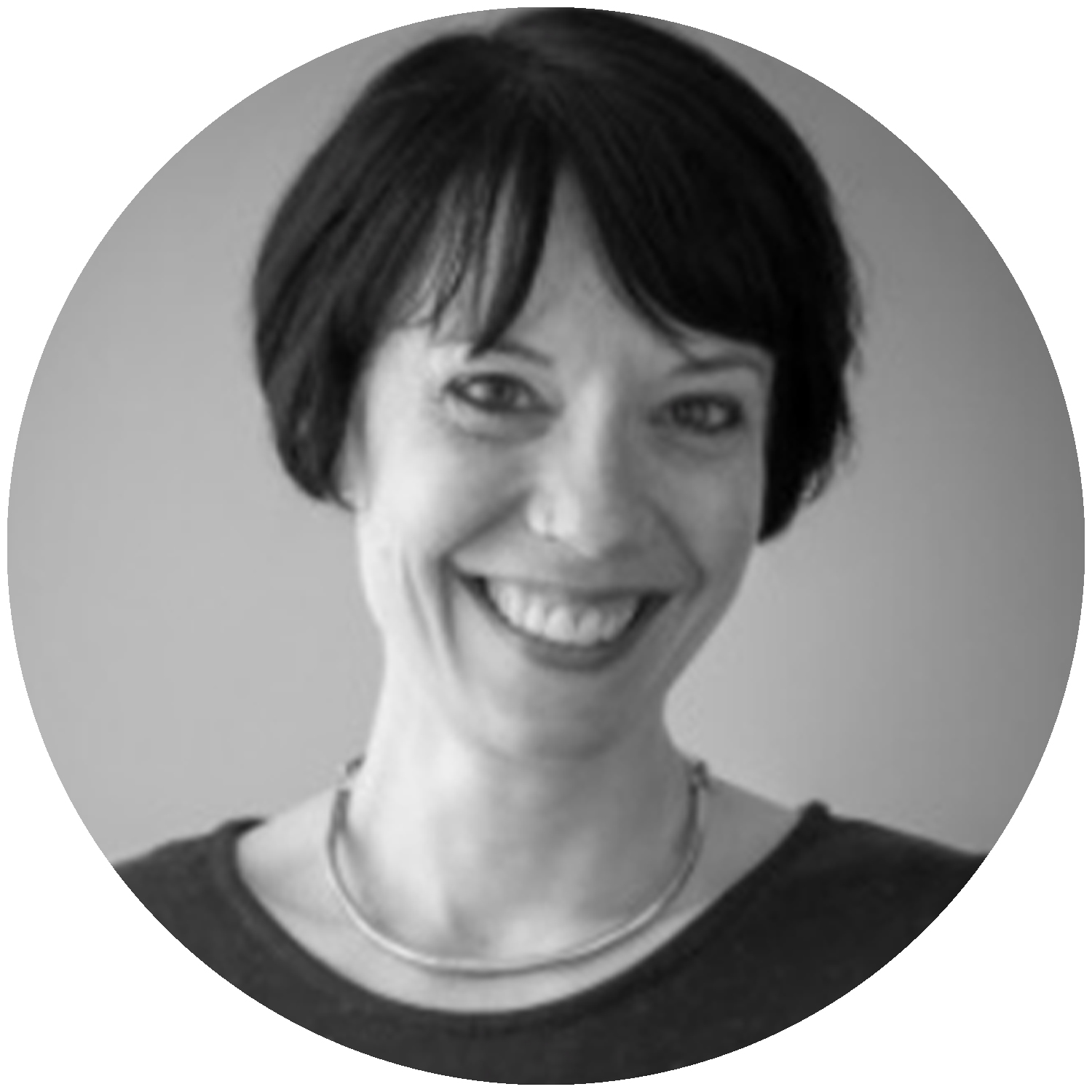
Michelle Delk
Sn?hetta紐約事務所合伙人,景觀負責人
景觀建筑師,美國注冊景觀設計師
Partner, Discipline Director
LandscapeLandscape Architect, ASLA
Michelle Delk是國際知名設計事務所Sn?hetta紐約事務所的合伙人和景觀建筑師。她具有多學科背景,設計作品契合Sn?hetta 的設計理念,即創造可促進人與環境積極關系的空間。她的作品重新定義了建筑環境所蘊含的內在美和其功能的合理性。
Michelle Delk is a passionate champion and designer of the urban public realm. Based in New York City, Michelle is a Partner and Landscape Architect with Sn?hetta, an internationally renowned design firm. Her work is trans-disciplinary, evocative, and representative of a simple foundational premise shared with Sn?hetta: to create places that enhance the positive relationships between people and their environments. Both aspirational and pragmatic, her work reveals and complements the sublime qualities of embedded beauty and rational functionality within the constructed environment.
在大學學習景觀時,我發現藝術與美感是連接人與場地的紐帶。另外,我對城市環境十分好奇,同時對人們如何與我們設計的場所進行互動也很感興趣。當時我還不明白,但我現在意識到,創造連接人、歷史、故事以及環境的空間,這就是景觀設計。
—— Michelle Delk
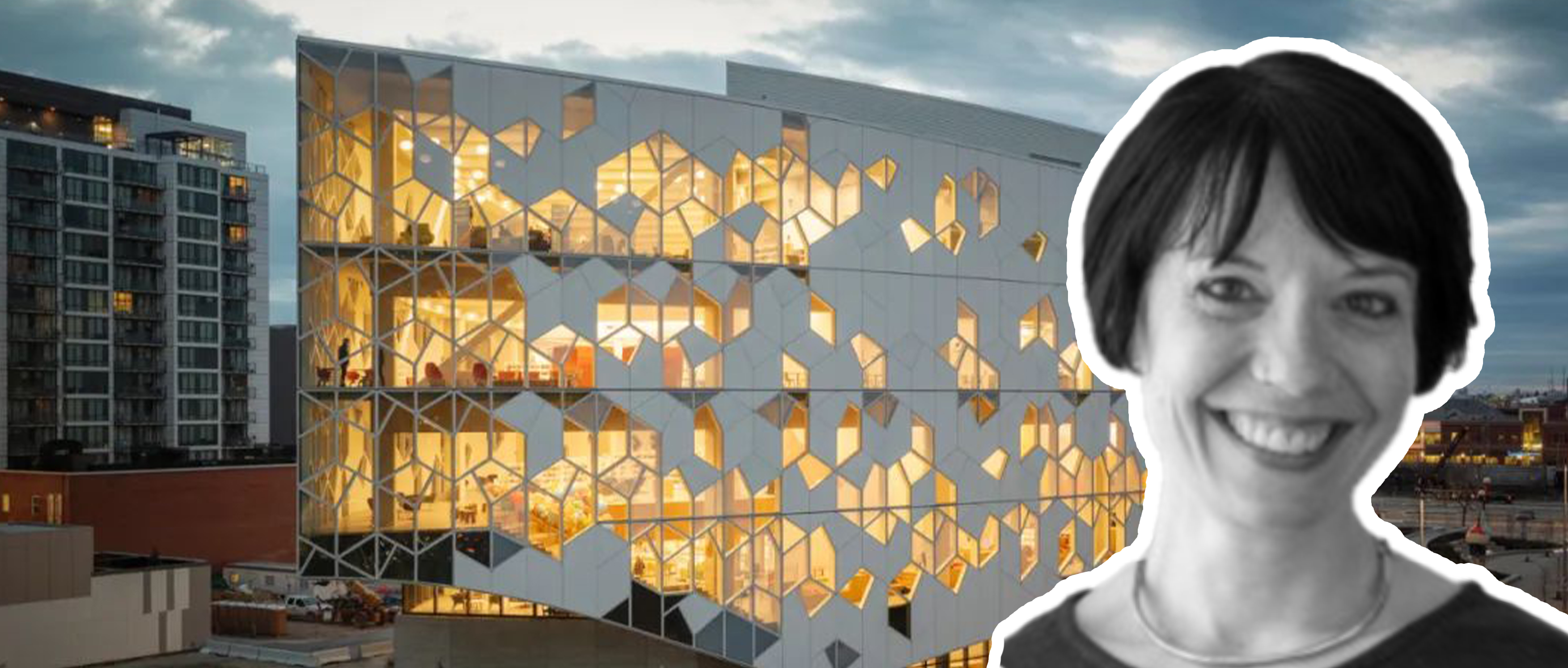
01 / 景觀與建筑的邊界
Landscape And Architecture
█ Sn?hetta的設計作品模糊了建筑與景觀的邊界,特別是在Oslo Opera House項目中體現的尤為明顯,比起一個建筑,它更像是一個有功能的藝術品。您能否分享一下你們是如何在設計中融合多學科的?
In Sn?hetta’s projects, there is no boundary between architecture and landscape architecture, especially in the famous project, Oslo Opera House. It's more like art but has functions. Could you tell us a little bit about this discipline?
M:Oslo Opera House是一個很好的例子,當我加入團隊時它就已經建成了。
我們公司主要有兩個設計理念。一方面,Sn?hetta對于跨學科的合作很感興趣。我們團隊中有建筑師、景觀設計師、室內設計師、平面和產品設計師,每個人都有不同的觀點和背景。在設計中,我們不會以消解建筑和景觀之間的差異為目的。很多時候這是結果,但不是目的。
我們的目的是,不論你的領域和背景是什么,所有人都可以坐在一起,探討最有趣的,最引人注目的,最具創新性的和可以解決項目問題的想法,因為我們對于可以創造出具有美學、功能性和識別度的設計抱有極大的熱情,所做的一切都是為了可以激發出更好的設計理念。因此從項目開始到結束,所有人都互相協作,而且沒有等級劃分。
基于這一公司理念,當我們設計劇院時不會按照先讓建筑師設計然后再讓景觀設計師介入這樣的工作流程進行,雖然這是很多公司出于實用主義而常用的工作流程,但在Sn?hetta我們一直在不倡導這樣做。因為當所有的設計參與者不能同時接觸這個項目時,就很難產生跨學科的自由交流。所有參與者在項目早期一同達成這個項目的設計理念是我們非常重要的文化,因此最終的設計結果也通常能展現出公眾與場所之間多層次的互動可能性。不論是這個屋頂作為城市集會空間的劇院,還是我們去年在芝加哥新建成的城市輕軌上的圖書館,都產生了這樣的結果。
所以,我想說的另一方面就是,我們非常欣賞和尊重每個人不同的背景和專業性。雖然讓我們每個人都成為全領域的專家是不切實際的,但是重要的是大家都參與到設計概念的討論過程。之后我們再聚焦到不同專業分工上開展設計,并努力達到最高質量的成果。專注自身領域與團隊協作同樣重要,這也是我們一直在努力的方向。
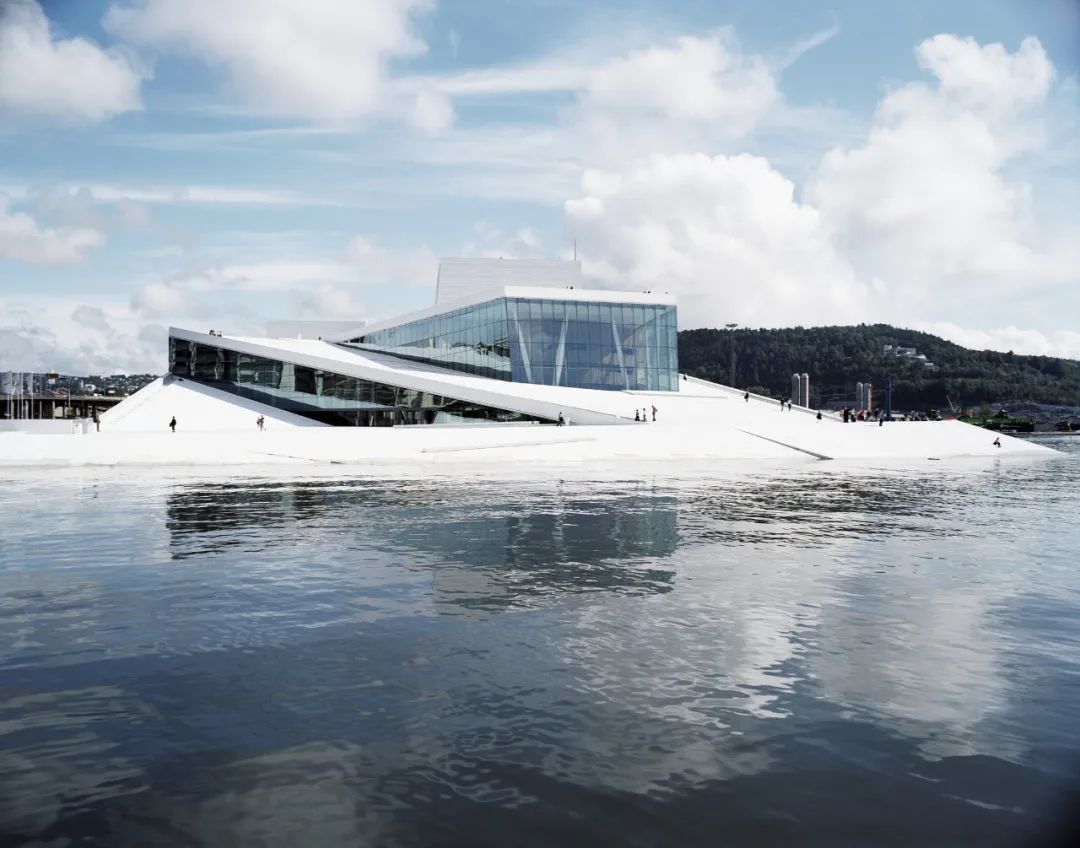
Norwegian National Opera and Ballet ?Sn?hetta
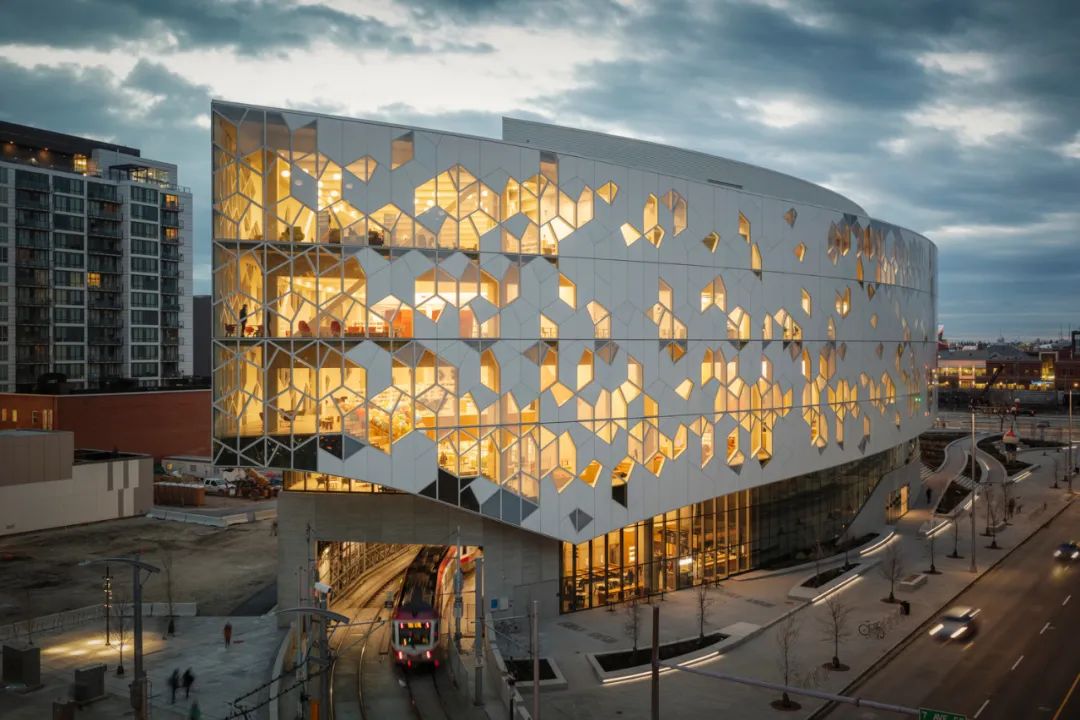
Calgary's new Central Library ?Sn?hetta
Sure, Oslo Opera House is a great example. It was complete by the time I joined the firm. But I think there's a couple of important aspects on how to think and work within design.
There is an interest at Sn?hetta in working together across different disciplines. There are architects, landscape architects, interiors, graphics, and product design. We all different points of view and experiences. And there's sort of two ways that I think about it. One is that the idea is we do not set out to erase the distinction between, say, building, and landscape. Sometimes that is an outcome, but it's not the goal.
The goal is to come together around a table, regardless of our disciplines and backgrounds. We look for the ideas that are most interesting, compelling, innovative, and address the program. Because we are all very excited when we can create functional responses that also embody beauty and recognize the human experience. So it's really about that idea generation. We're all at the table from the beginning and throughout the project. It's about reducing a hierarchy in how we work.
So it's not that, for example, when we have an opera that we need to design that the architects do some work and they have some ideas that they then come and get the landscape architects later and say, we have an idea of what we are trying to do. Now, how do you interface? That is a very common approach in practice, sometimes for very pragmatic reasons, but it’s what we try to avoid. But when you're not sitting next to each other, you don't have that fluidity or that ease of access. It is a deep commitment to come together early and create an idea together. So, the outcomes often embody greater access and generosity for the public to engage with places. Whether that's the opera, where the roof is a civic gathering space or other projects like the library we opened a year ago in Calgary, the new central library, with a light rail line that cut the site in half.
The other thing I wanted to mention about the way that we're working is that we really value and respect the knowledge that people build within their disciplines. It's important to work together. And then we have an idea. It's too much for any of us to be an expert in everything. Then we look to the disciplines that people have focused on and committed to and have spent our lives trying to execute work in the highest possible way. That focus is just as important as collaboration. So that's what we're trying to do.
█ Sn?hetta似乎并沒有一個具體的風格,但是很多時候又能一眼看出是你們的設計。你們是如何讓不同的想法具有各自特點,同時又使得公司整體的風格具有可辨識性呢?
There's no specific design style, but we can still recognize Sn?hetta’s work. How can you make individual’s idea shines and meanwhile keeps the style for the whole company?
M:當有了可以驅動設計的主要概念時,我們并不會直接用這個想法去轉化成設計方案,而是以此為靈感。我認為這是幫助我們在最終得到獨特設計方案的部分原因。
我們的項目設計概念實際上是我們的思考方式。我們可能很難說出最初的設計概念是什么,但是它為我們確定設計方案提供了線索。我想這就是為什么我們沒有一個設計手冊來告訴你Sn?hetta的設計是什么樣的,但是我很肯定你會看到這些線索一次次地出現在我們的項目中。
其中一個很重要的線索就是,我們總是在想如何讓更多人可以體驗到一個空間。以我們大劇院的項目為例,人們并不知道或是很難發現,當圍繞著建筑物走一圈,建筑就像被窗戶和玻璃“打開”了。人們可以透過它們看到建筑內部發生的事情,看到道具制作、服裝制作等等的場景,這些都像是表演里魔幻情節帶來的體驗一樣。但是我們并不總是從這種角度來思考。
因為體驗并不只是你可以進入大劇院內部或是觀看一場表演,它更廣泛的意義可以是帶領人們了解幕后發生的事情。也許有一個愛動手制作東西的人,他之前并不了解劇團背后有著道具制作的工作,但正因為在這里看到了,所以他真正想做的事情開始變得有意義;也許有對表演感興趣的人,最終加入了芭蕾舞團或是歌劇團;也許……。目睹這些平時隱藏在建筑內部的事情讓人們受到邀約,獲得感召。
你會發現我們所做的建筑和景觀設計都在回應我們希望人們參與其中這個線索。因此,通常可能會看到很多建筑內外的轉接空間,這些空間既具有使用功能,又引導人們進入。這些都是我們設計的線索,如果你仔細觀察就會發現我們項目的共同點。
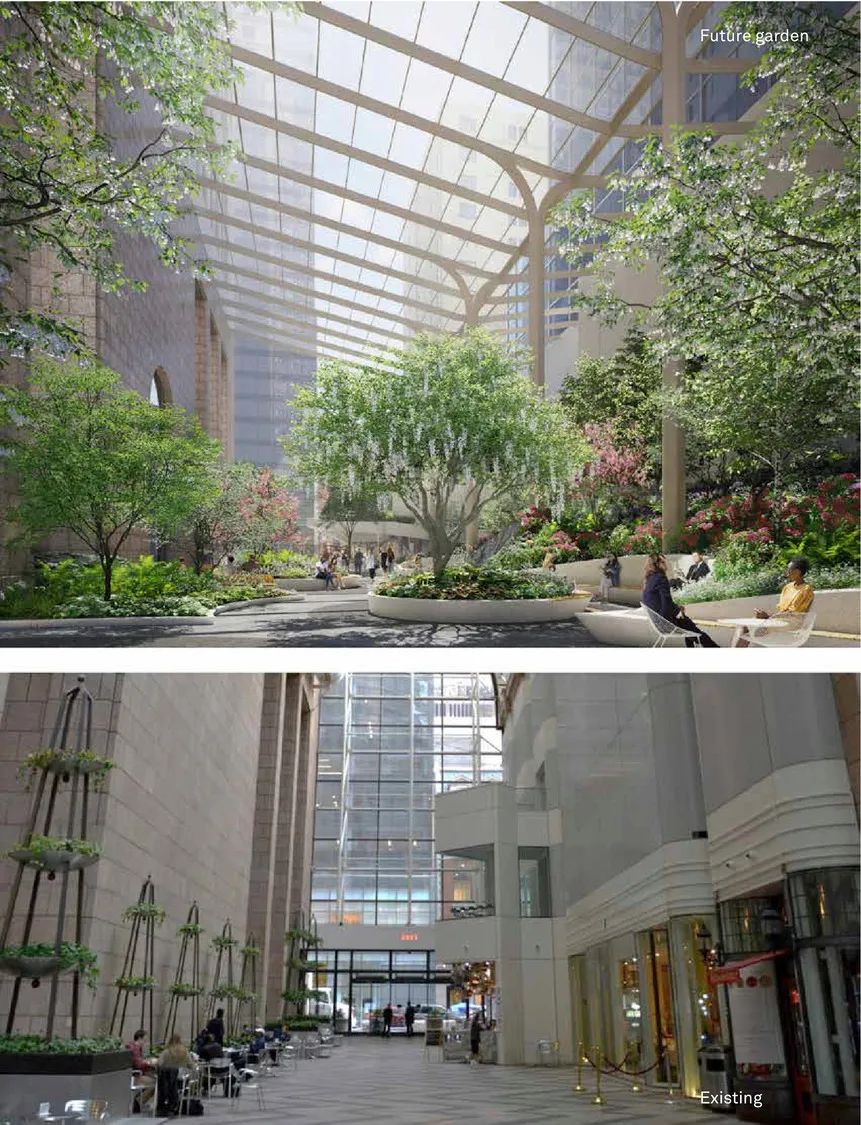
550 Madison Public Garden, ?Sn?hetta

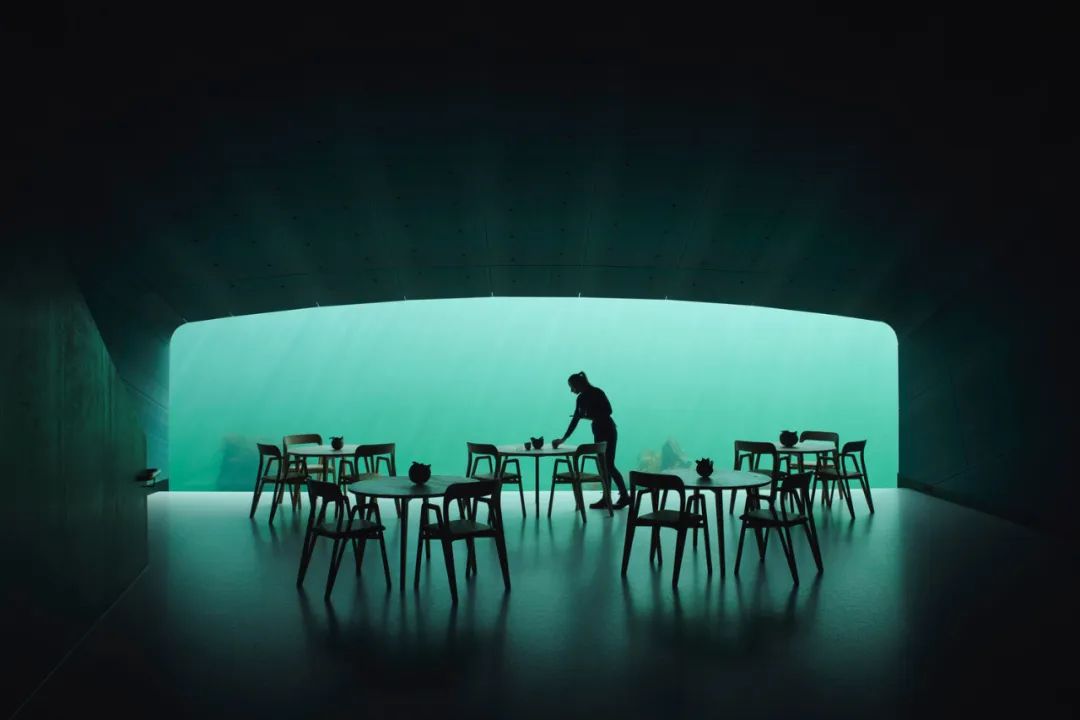
“Under” – Europe’s First Underwater Restaurant ?Sn?hetta
When we think about a concept or an idea that is driving a design, I think part of what helps us arrive at somewhat unique solutions is that we don't rely on an idea being directly translated. We rely on it as an inspiration.
So when we talk about concept design on a project, we’re talking about the concept of our way of thinking. The viewer may never actually be able to tell you what that original concept is, but it gives us the thread or the connection to work around. So, I think that is one reason why we don't have a series of design handbooks where you can necessarily see what a Sn?hetta design looks like. But I do think you see threads and the threads come out overtimes.
The idea is that we're really interested in how you can open up greater access. So, going back to the opera, what people often don't know or don't see right away is that when you walk around the perimeter of that building, we opened it up with using windows and glass. We opened up views into the back of house places where people are building sets, making costumes, and doing things that are part of the magic of the performance when you go to see a show. But we don't always think about that or recognize that.
So, access is not just being able to go inside or being able to afford a show, but access in a broader sense, helps people see what's happening behind the scenes. And maybe there's someone that they never knew about, that they would have a future being a part of ballet or an opera because they love building things and what they really want to do is beginning to make sense. And to see these otherwise hidden activities and witness them is a part of that invitation.
So, I think you start to see responses in both our architecture and landscape that are about bringing people in and inviting people to participate. And so that often is maybe seeing more visibility inside the building or to a space outside that is intended to be a place to occupy and play as well as the way that you enter a space. I think those are some of the threads that if you look closely that you can start to see through a commonality in the work.
█ 聽說您在小時候時就接觸到了景觀和建造,您是如何走上景觀設計之路的?
I know that you had a lot of resource in communicating with landscape and infrastructure in your childhood. How did you take a journey to landscape architecture?
M:小時候,我其實并不知道我未來會成為一名景觀設計師,但當我每每在職業發展過程中回顧過去,會發現景觀從我的童年開始就一直貫穿在我的生活中,之后我就意識到了那些當時并不起眼的經歷與現在的聯系。
我在北愛荷華州的一個鄉村環境中長大,那里人口不多但是景觀資源豐富。我和所有的孩子一樣,把空閑時間全都花在探索室外環境和想象世界的樣子上。不過不同的是,我在很小的時候就開始做一些景觀構筑物了。那時候我大概7、8歲,我記得我父母曾砍倒了一棵樹,砍下的樹枝都堆在我家后院。在一個冬天,我突然想做一個屬于自己的冰屋。我就用所有的樹枝做了一個圓頂結構,然后把雪拍在上面,在頂上還留了一個洞,這樣就可以在里面生火,于是那個冬天我在那個小小的庇護所里待了好幾周。我想,我對于改變環境以及體驗環境的興趣是貫穿了我整個職業生涯的。
不過,我是上了大學之后才知道的景觀設計。在那之前,我都沒有聽說過這個行業,因為在我長大的地方,那里并沒有公認的景觀設計,所以我一直在探索我喜歡從事的行業。整個青蔥時代,我都十分熱愛藝術,并且一直在學習藝術知識和制作藝術品。我發現大地藝術家的作品之所以如此鼓動人心,是因為他們在簡單的景觀環境中所創造出了遠超其環境本身的體驗。比如說Christo創作的Running Fence和Robert Smithson 創作的Spiral Jetty還有其他的景觀作品,它們都向我傳達了同一個思想,就是我可以讓人們以全新的方式看待周遭的景觀,可以通過景觀設計講述一段故事,一段歷史乃至表達一個觀點。大地藝術家們曾同我們現在一樣,思考著周邊的環境。所以我們現在做的并不是一個新的事情,只是運用了不同的方法。
在大學學習景觀時,我發現藝術與美感是連接人與場地的紐帶。另外,我對城市環境十分好奇,同時對人們如何與我們設計的場所進行互動也很感興趣。當時我還不明白,但我現在意識到,創造連接人,歷史,故事以及環境的空間,這就是景觀設計。

Christo and Jeanne-Claude Running Fence, Sonoma and Marin Counties, California, 1972-76 Photo: Wolfgang Volz ?1976 Christo

Robert Smithson, Spiral Jetty, 1970.
?Holt/Smithson Foundation and Dia Art Foundation/Licensed by VAGA at Artists Rights Society (ARS), NY. Photo: George Steinmetz
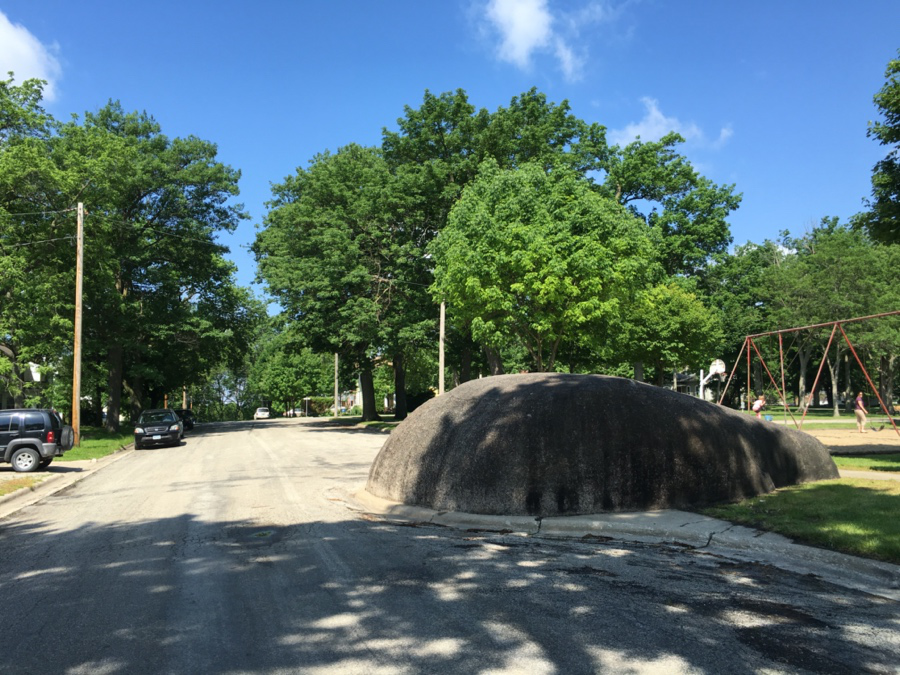
Boulder Park, Nora Springs, IA
I certainly didn't know as a young person that I would be a landscape architect, but I think it's been helpful at different points in my career to look back at those experiences that really stand out, that have come throughout my childhood and my entire life. Then you start to see these connections that you didn't know meant anything at the time that you were experiencing it.
When I was young, I grew up in a very rural part of northern Iowa. There's a lot of landscape, but not a lot of people. I spent all my free time outdoors exploring, imagining worlds as any child does. But I started making things in the landscape at a very young age. I remember that my parents had a tree cut down for some reason. For a while, all the branches and everything was in our backyard. And one winter I decided to make my version of the igloo. I was seven or eight or something. And I remember I took all the branches and I built this dome structure and packed snow around. It had an opening because you can build fires inside. I went indoors and got some matches. And I built this little shelter that I just hung out for however many weeks it lasted through the winter. But I think that connection to an interest in shaping the land and just experimenting has been threaded throughout my whole career.
I learned about landscape architecture after I went to undergraduate school. Before that, I hadn't heard of it as a profession. There weren't a lot of recognizably designed landscapes in the area where I grew up. So I was trying to figure out what I was interested in. All throughout my youth, I loved art. I was always learning about art and making things. I learned about earthwork artists which were just so incredibly powerful and inspirational to me because they're making new experiences out of what they found or introducing something very simple into the landscape, such as Christo’s running fence or Roberts Smithson’s spiral jetty. And many of these places throughout my life, passed me the idea that you can help people see the landscape around them in a new way. And you can bring out stories and histories and a point of view. As earthwork artists, they're thinking a lot about the environment at that time, just as we are today. What we're doing today isn't new. We're just doing it in a little bit different way.
When I learned about landscape architecture in college, I started to find that the thread was between art and beauty and what draws us to places and connects us to places. And I also had this strong curiosity and interest in urban environments and how people interact with places that we make. I didn't know then, but I figured out that is landscape architecture. We make places that connect people, history, stories, and environment.
02 / 跨學科的設計實踐
Transdisciplinary Practice
█ 你可以介紹一下Sn?hetta的紐約辦公室么?和其他的辦公室相比,紐約辦公室有什么特點?
Can you tell us something about the New York office? Among other branches all over the world, what is the unique of the New York office?
M:在全球范圍內,我們有7個辦公室,紐約辦公室是最大的辦公室之一。我們以建筑設計師為主,一共大概有43個建筑師,18個景觀設計師,4個室內設計師和市場運營的團隊。我們在舊金山也有一個小的辦公室。雖然這兩個辦公室在不同地點,但是我們是作為一個整體來運營的。通常,我們的項目都在美國境內,現在手上在做項目多數在加拿大、美國,少數在南美。
雖然我們各個辦公室專注在不同地域的項目上,但彼此之間并不是相對孤立的,我們會互相合作。我們希望建立起這種密切聯系,而基于地域的組織方式正好有助于此,同時我們各地的辦公室會相互共享很多東西。我們公司,作為一個實踐主體,一直以來都希望與有著不同學科背景和地處不同地方的人們一同工作。
我們每一個城市的辦公室都有一張占據很大空間的桌子,可供很多人一起開展工作。我們也有一個公共區域,大家經常一起坐在那里休息、聊天和吃午飯。日常時間我們會和客戶一起舉辦研討會,我們大家會一起畫圖,做模型,與我們的同事和其他領域的合作者們探索設計理念。因為我們的客戶通常都是來自于不同的機構和組織,所以我認為將我們緊密聯系在一起的就是我們共同合作的工作方式。

Photo of New York office ?Sn?hetta
We have 7 offices now in different parts of the world, and the office in New York is one of our larger offices within our company. The majority of architects are in New York with about eighteen landscape architects, forty-three architects, four interior architects and a team of communications people and administrative. We also have a small studio in San Francisco. The SF and NYC offices sit in two places, but we operate them as a single entity. Generally, our business is focus within the United States. Most of our work right now is in Canada, US and a little bit in South America.
Although our offices have a little bit of a geographic focus, they are not mutually exclusive. We collaborate our work together. We want to have that personal connection. So that geographic focus, I think helps with it. There are many things that are shared across all the offices. We, as a practice, are committed to that idea and way of working with different disciplines and people from different places.
The one thing you would find in every office is that we have a large amount of space that's devoted to large tables where we can come together and really do work together. We also provide a communal space in our offices where we often sit and have lunch together. We have workshops with our clients. And we make drawings and models and explore ideas not only with the people working in Sn?hetta, but also with our other collaborators. Our clients are usually a group of people who come from different agencies or different parts of an organization. And I think what ties us together is the way of working and approaching the work together.
█ 在項目設計中,你們會包攬建筑、景觀設計甚至是室內設計嗎?
When working projects, will your office take over everything from architecture, landscape architecture and interior?
M:我們一直都在努力進行跨學科的合作,哪怕只是設計一個室內的項目,一把椅子,或是一個公共室外空間。我認為,客戶之所以經常選擇我們,就是希望我們可以提供上述各種方面的設計服務。
負責任地說,我們幾乎所有的項目都是既負責建筑設計又負責景觀設計的。通常,這也意味著需要進行室內設計。當然,有些時候客戶找我們只是想做文化建筑單體,我們就會和他們溝通,表達我們以自己的工作方式來做項目效果才會達到最好。在后續的交流和工作的開展中,也逐漸在向我們所希望的多學科協同合作的方式去靠近。

550 Madison Public Garden Rendering, ?Sn?hetta
We try to bring people together across the disciplines. Even if it's an interior project, an object, like a chair or something, or a landscape architecture space of public space, we will still engage within the studio across the disciplines. I will say though, that people often hire us because they want us to provide all of those services.
I should say almost all, we rarely have a project where we're not responsible for both architecture and landscape architecture. And typically, that means interiors on some level. But we sometimes have that happen during the selection process when we're brought in. Some clients have hired us because they have a cultural building that they want us to do. Then we say, for us to do our best work, it's important that we work in this way. And then we continue that dialogue and it evolves through that. But it's always a presence in the way we're looking.
█ 美國第二大瀑布威拉米特瀑布濱水景觀是你和團隊正在進行的項目,現在已經在施工過程了么?可以分享一下設計背后的故事么?
The Willamette Falls Riverwalk is the project you are working on right now. Is it under construction? And what is the story behind the design?
M:這個項目自2015年開始到現在已經進行了很多年了。場地的情況十分復雜,而且客戶由多個公共機構組織共同構成。
波特蘭通用電氣公司一直在使用水力發電的大壩。壩河兩岸土地的持有者之間有很深厚的聯系,其中的一個持有者在去年夏天剛剛買下了我們的設計場地。所以當我們開始施工的時候,土地所有者與之前不一樣了。當地的公共機構,包括市級、縣級和州政府和地鐵公司建立了伙伴關系并且與土地所有者達成共同協議,征用其土地以開放河岸給市民休閑使用。從這一角度出發,我們也在努力進行項目愿景勾畫和概念設計。
當場地土地持有者發生改變的時候,我們正在進行項目第一階段的施工。他們對于我們將河岸開放給公眾的想法非常贊同,并也逐步參與到項目中來。當然,我們整個的工作方式也根據現在土地持有者的意見做了一些調整,未來我們也還要繼續與其進行外沿服務合作和相互學習。我們希望通過我們的努力,在第一階段的設計施工完成后,公眾可以回到這個150年來都被工業行業占領而無法安全通行的河岸。
在這個行業中,耐心十分重要。這個項目的資金都是以不同的形式來源于各種渠道的,因此我們希望對所有人的提出建議都有所回饋,也十分理解并愿意去接受場地的各種復雜關系。在保留而不是清除場地的現有情況意味著實現我們的設計想法會是一個很艱辛的過程。但是我仍然很樂觀,并且認為終有一天這里會變成一個讓人覺得不可思議的場所。
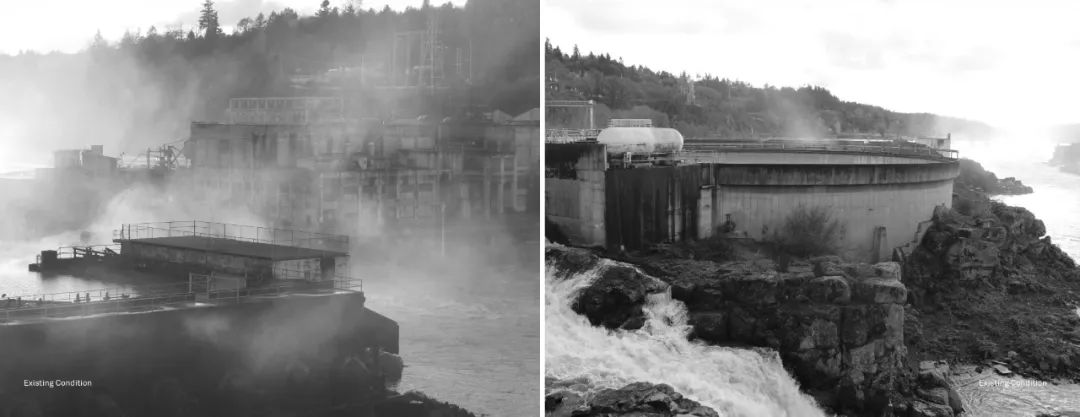
一個多世紀以來,這個令人驚嘆的地方一直被沿水邊修建的工業基礎設施切斷了公共通道 ?Snohetta
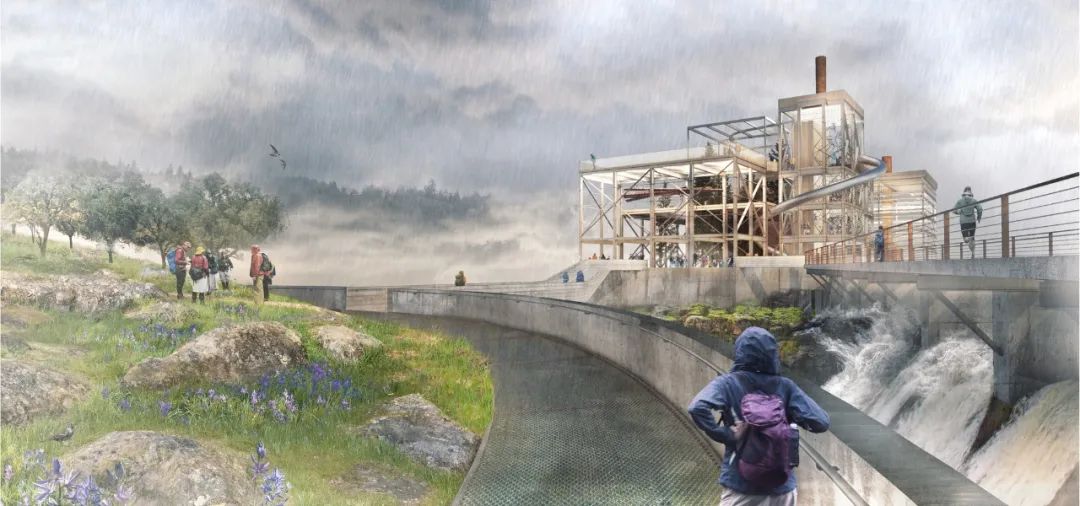
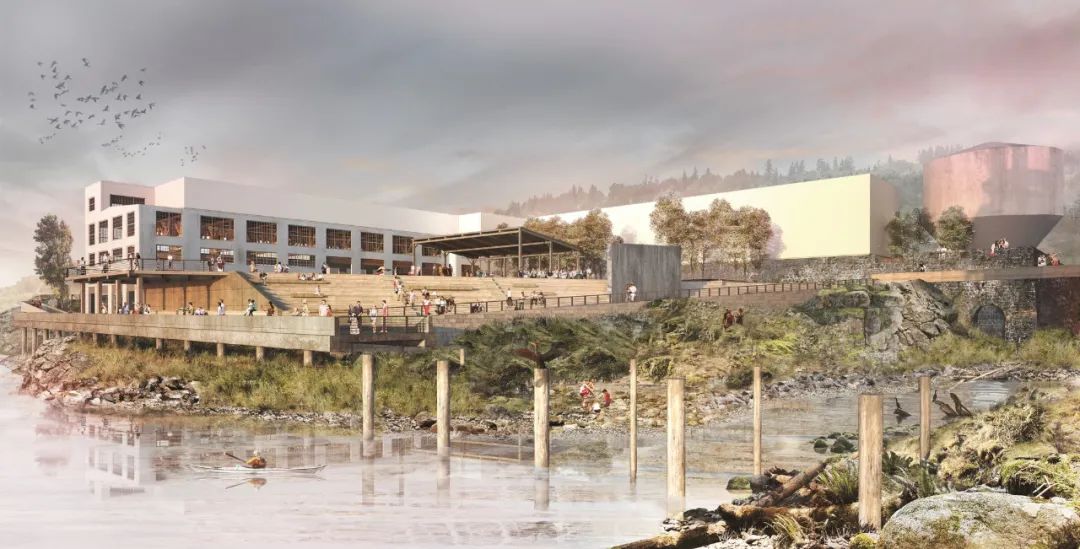
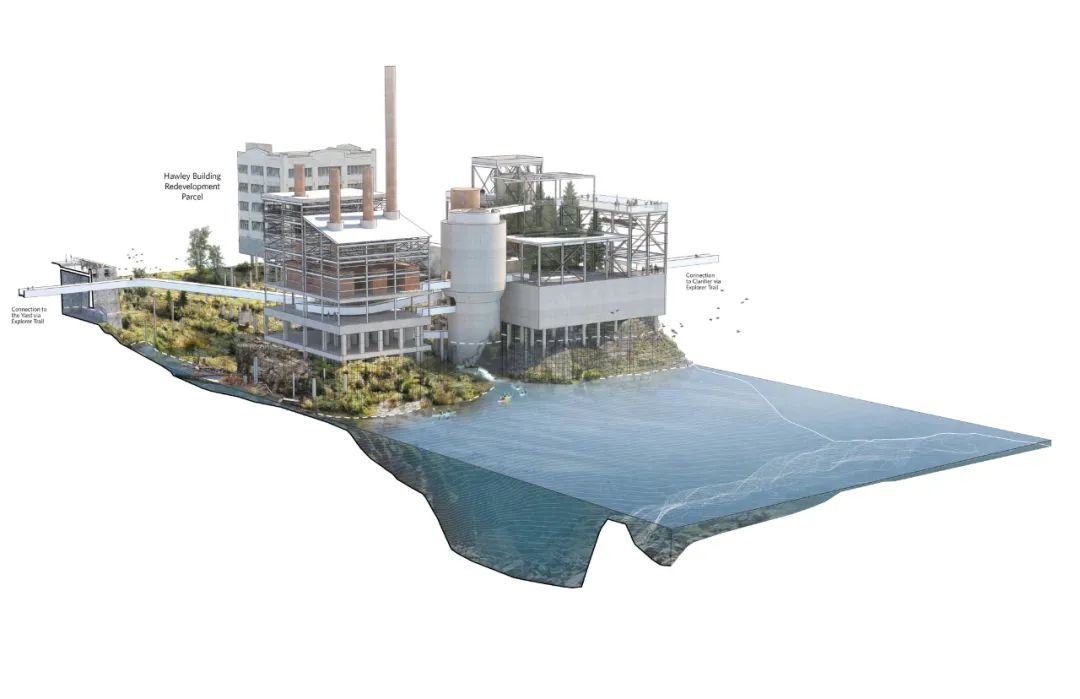
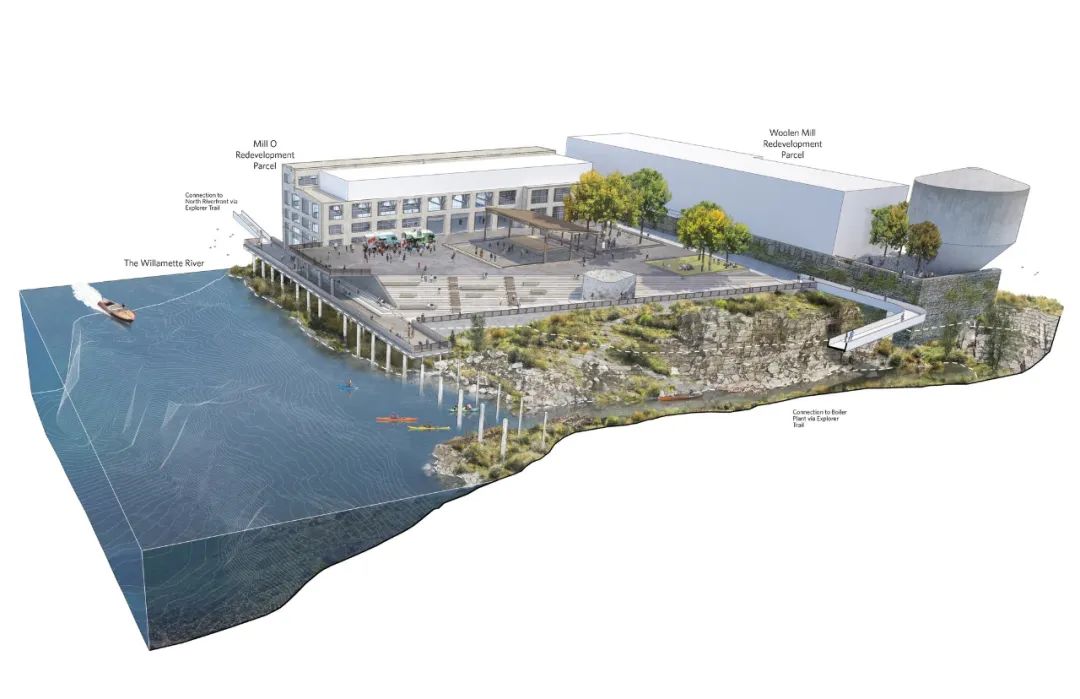
Sn?hetta主要公共景觀的設計希望將找回完整的瀑布的高度和崎嶇的海岸線,重新連接其壯觀的海濱城市 ?Snohetta
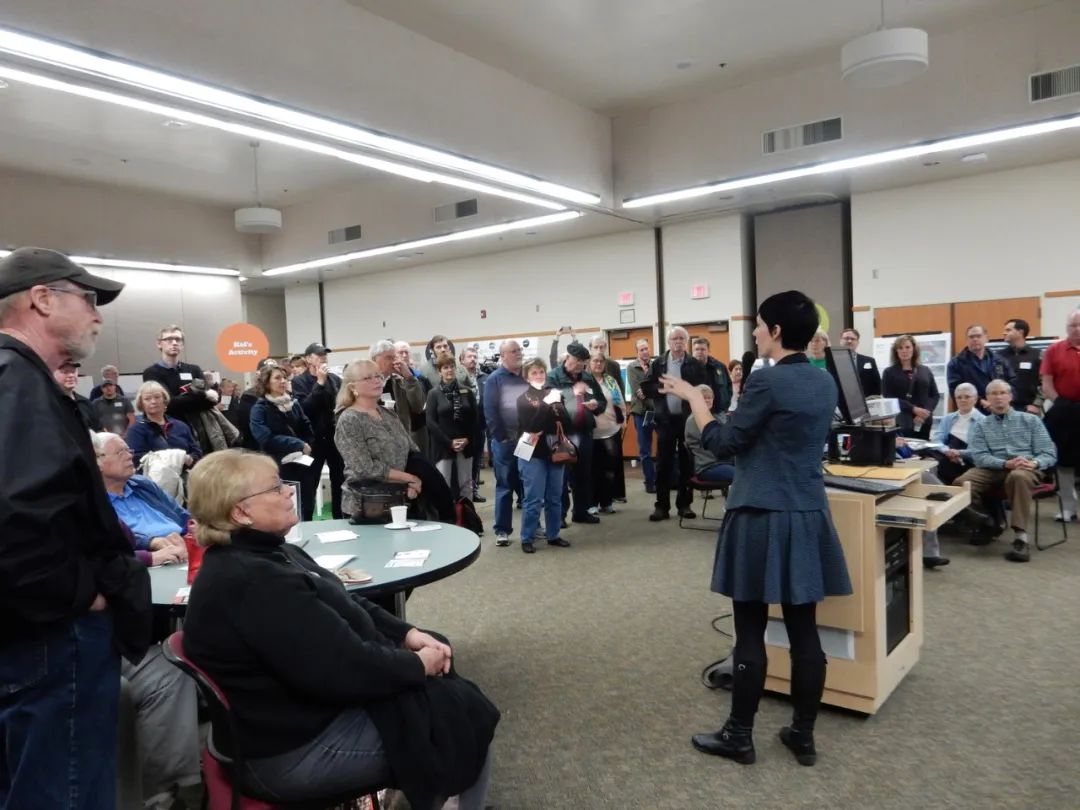
Public Engagement Process for Willamette Falls Riverwalk Restoration ? Snohetta
We started in 2015. It's been a while, but this is one of those places that is incredibly complex. Multiple public agencies are part of this client team.
Portland General Electric still operates the hydroelectric dam. Several confederate tribes have deep connections. And one of the tribes just purchased the site this summer. So when we started our work there was a different landowner. The public agencies include the city, the county, the state, and the metro government. They had formed a partnership together and an agreement with the landowner to have an easement to provide public access back to the riverfront. So we were working to do the vision and the concept design through that lens.
We had been working on the first phase when one of the tribes purchased the land. And they have been getting more and more involved. They're very excited about continuing to move towards the vision that we put together. But it changes our way of working a little bit. And there's just an ongoing need for outreach and learning. I think we'll be working towards phase one which will open up access and be able to bring the public back to this site. Because the site has been used for about 150 years for being industry. It's been closed and not safe for people to just walk through.
Patience is really important in this profession. I know funding is coming from different sources and in different ways. We want to make sure that all voices are heard and that the complexity of that site is valued. And I think, in fact, retained and not wiped away means that there's a process that has to be incredibly rigorous and diligent. But I'm very optimistic. And I think one day it'll be a pretty incredible place.
█ 我認為這是一個極具挑戰的項目,尤其是河岸兩側都被工業遺存所占據。對于生態方面,你們是打算如何維護呢?
I think it's a very challenging project because it has other industries surrounding the riverfront. So how do you rein restore the ecology?
M:通過調查研究歷史照片和與自然科學家、水文學家的合作,我們已經發現了很多維護的生態可能性。尤其是從生態棲息地的角度看,這個項目為消除阻礙棲息地發展的不良因素提供了一個很好的契機。比如,今天在現場,你很難發現歷史遺留的水渠穿過場地。在一些地方,棲息地被水填滿,自然高地上建成了新的平臺。如果我們可以像做外科手術一樣把這些移除,我們就可以和生態學家、科學家合作,恢復作為動植物新家園的生態棲息地,并使之成為自然河岸景觀的一部分。
雖然這一切在當下還很難看到最后的成果,但是得益于場地潛在的巨大可能性以及客戶和周圍社區的強力支持都會使其在未來實現我們的設想。
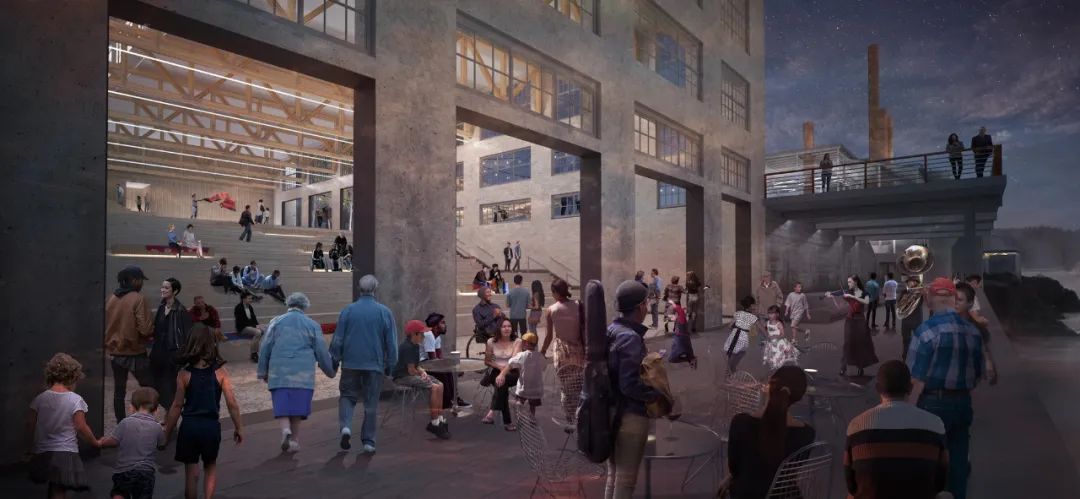
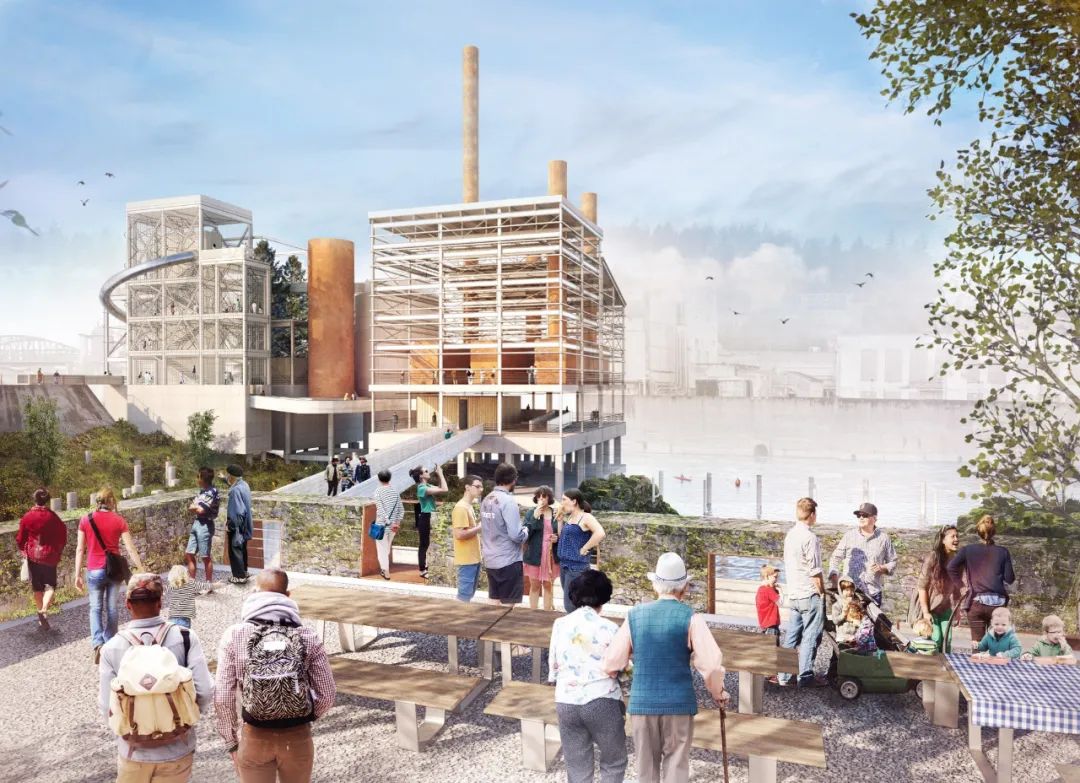
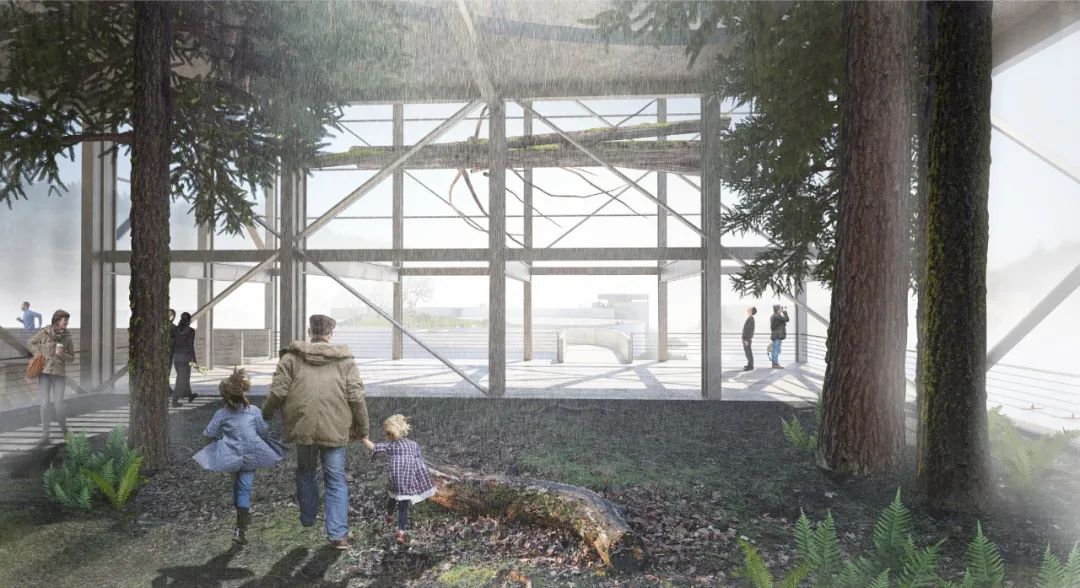
?Snohetta
By studying the surveys, historic photos, and working with scientists, hydrologists, and natural scientists, we found that there's so much that's already in place. So especially from a habitat standpoint, there's a great opportunity to remove some of what's there that is keeping the natural habitat from flourishing. We're doing that very surgically to open up areas that can provide new homes for habitat. For example, you can't easily see when you're on-site today that there are historic tailraces that come through the site. In some places, these habitats have been filled in, or a platform built over the natural landform. If we just remove that, then we can come in and work with ecologists and scientists to restore habitat in places that are perfectly natural for it to be there as part of this soft ecology riverfront.
It's hard to see right now, but there are incredible potential and a huge commitment from the client group and the community around that being a real core part of the future.
█ 設計師有時會遇到客戶改變想法,甚至最終選擇了其他設計師的作品。您對于遇到這樣的情況會怎么處理?
Designers sometimes meet the situation that their clients change or choose another work in the end. Do you have any suggestions for that situation?
M:我希望大家可以看到項目設計過程本身的價值。只要你享受并且珍惜這個過程,始終保持好奇心并從中汲取靈感,即便因為種種原因使得項目最終沒有建成,那些與其他人一同工作,開拓自己視野的過程依然是很好的經驗。
另一方面,在公司從事設計工作的好處是,你會接觸到與你日常生活的地方不同的社區文化和環境,而且在你不熟悉的環境中工作會為你打開一扇新的大門。在這個過程中,你會面臨很多挑戰,為了建立設計與當地的聯系,你需要通過當地的合作伙伴來了解該場地。
I imagine for others to see the value in the process. If you can enjoy and value that process and be inquisitive and curious and pull inspiration from that, when something doesn't work out, that experience of spending time with people in that openness is an invitation.
On the other hand, one of the benefits of working for firms is that you work in different communities from where you live. Your eyes are wide open when you're working in a place that you're less familiar with. There's a lot of challenges and we rely a lot on our local partners in relationships to learn about that place. Because the place is really where the work comes from and where we want to connect to.
█ 您提到過曾經與丈夫一起設計了他的餐廳。這同樣也影響了您的工作和設計的方式。您能分享一些其中的故事么?你們是怎么相互影響的?
You mentioned that you worked with your husband on designing his restaurants. And it also influences the way you work and design. Would you like to share more stories? And how would you influence each other?
M:當你和某個人結婚后,你們會在一起談論任何事情。我認為與有創造力的、熱愛塑造空間的、并思考自己所創造的空間會被如何使用的人建立關系,會對彼此產生很大的影響。不論我們所從事的領域是什么,這些想法都會自然而然、從內而外地分享給彼此。
他從事的領域是餐飲業。但是,我從他對于與人互動的看法中學習到了很多。我對他一直很欣賞的一點是,他將餐廳視為一種身臨其境體驗的發生地。他認為,食物只是餐廳之所以吸引人們前去的一部分原因,而更多的原因則是在邀請人們進入到一個社交空間來獲得一次驚喜的、美好的、微微不同于日常生活的體驗。雖然我們所從事的領域不同,但是我們都很贊同這一理念。
他同所有設計師一樣,十分清楚自己想要什么,我也很尊重他的想法。在他的領域,我更多的是起到一個提供更多的設計可能性的輔助角色。反過來,在我的領域也是同樣的。所以,我不會說是我們一起設計了他的餐廳,因為我更多的是在支持他以及提出一些自己的看法。但整個過程真是棒極了,我也確實幫助他建造了其中的一些空間。
在我的職業生涯中學到的是,當你有機會親手建造某些東西時, 你會用不同的方式思考設計。我們以前時常會開玩笑說,等餐廳建成了我們就可以結婚了,我們一同頂住了那些壓力,因此我們可以保持一個長期的關系。現在距離我們結婚也已經過去一段時間了,當初的玩笑也已經成真。
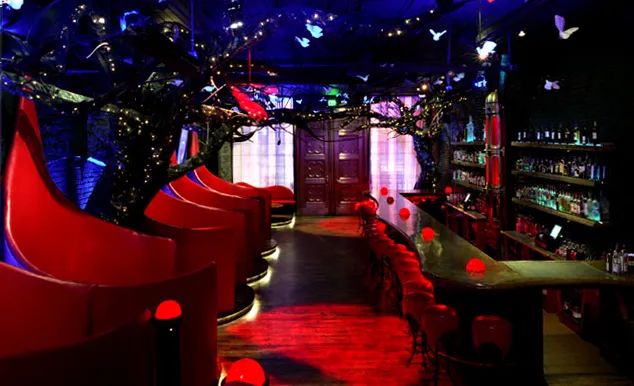
Mario's Double Daughter's Salotto, Denver, CO
When you're married to someone, you talk about everything. I think it has had a strong influence to have a relationship with someone who is creative, designing spaces, and thinking about how people inhabit those spaces. Those are all shared across inside and outside whatever we're doing.
So, his platform happens to be restaurants. I think I've learned a lot from his point of view about observations and engagement with people. And one thing I’ve always admired about him is that he sees a restaurant as an immersive experience. Food is just one part of going to a restaurant from his point of view. It is just one component of inviting people into a social space to have an experience that takes them a little bit out of their daily life with something surprising or beautiful. I think we share this thread regardless that our disciplines and areas of working are very different.
He has a very strong idea about what he likes just like any designer. I respect that. And when I’m in that realm, I am more someone to bounce ideas off and help in any way that I can. And the same in my realm. So, I would not say by any means that we design his restaurants together but I’m mostly there to be supportive and offer ideas. It's been amazing. I’ve helped him literally build some of those spaces.
And what I’ve learned over my career doing that is that I think when you have the opportunity to build something, you really think about design differently. We used to joke that once we built that together, the restaurant that I showed earlier today, that we knew we could get married because we could go through that kind of stress. We knew we could have a long relationship together. It's been a while now. So, it seems to work.
03 / 給設計專業學生的建議
Advice for Design students
█ 您曾在科羅拉多大學執教。考慮到您的教學經驗和實踐經驗,您認為學生在學校里應該著重學習些什么?對于他們您有什么建議么?
I know you taught classes at the University of Colorado several years ago. Considering your teaching experience and practice experience, what do you think students should learn at school? Do you have any advices for them?
M:我認為可以從不同的角度來思考這個問題。學校是一個來學習和形成自己設計脈絡和思考方式的地方。所以你需要保持好奇心,去找到可以清晰表達你想法的方式,明白你的想法的重要體現在哪里,又是什么促使它形成,以及你要如何用不同方式把你的想法傳達給他人。我認為你還需要學習如何眾多的設計可能性、之前的研究和前期分析中提取出核心想法。從周圍信息中提取并消化成你所理解和掌握的信息是最應該學習的能力之一。
當然,景觀設計是一個非常技術性的職業,我們需要學習很多東西才能最后落成一個設計。所以我想說,了解行業的復雜性也是十分必要的。外界因素既可以成就一個項目也可以摧毀一個項目。對此感到好奇并知道我們并不是一個孤立的領域十分重要,無論你的設計想法多么出彩,如果你不能向外界傳達你的想法或是不理解預算和項目的限制,再好的想法都無法實現。
當然,學習畫畫和通過接觸其他領域以不同方式獲得靈感對設計也很有幫助。我們都知道現在的電腦繪圖工具對于我們快速表達設計想法很重要。但是我認為在學生時代,更重要的是嘗試和學習不同的表達媒介,比如手繪,手作模型等等,這樣你的思想和身體都參與到設計過程中幫助你獲取靈感。另外,我認為學習不同的繪圖方法也非常重要,原因是你可以探索不同的想法并且通過不同的繪圖方式交流你的想法。這樣,你用不同的繪圖方式就學到了不同的東西。
我不是說不要學習電腦繪圖軟件,這也是設計的表達方式之一,但是我認為我們有時候太依賴于此了。我喜歡把電腦里的圖按比例打印出來,這樣會讓我有更好的尺度感。在公司里,我希望所有的圖都是有比例的。這樣在我想在設計中加些東西的時候我可以很方便地測量尺寸,在測量之后我就可以跟同事說,做個15英寸的東西比較合適。我們在所設計的空間里感覺會是什么樣的呢?想必我們只有把自己放進那個空間才會有直觀的想象,因為無論如何,空間不是一個供人觀賞的物體,對吧?

ArchiDogs interview with Michelle Delk at ASLA’19 San Diego
I think that you can think about this in different ways. I think this is the time to learn and form a process for yourself of design and way of thinking. So, you need to be curious, really try to find ways to clearly communicate your ideas, why they are important, what's informing them, and how to communicate them to the people that you'll be working within any number of ways. I think you need to learn how to communicate and investigate ideas and extract out of so much possibility, research, and exploration that happens. Extracting and editing something that you can really get your arms around is one of the most important things to learn.
Of course, this is a very technical profession. And there's a lot of things we have to learn about how to execute our work. So also I would say it’s important to understand this and get an idea about what that complexity is. Everything that influences us can build and execute a project. Being curious about that and knowing that it's not an isolated realm. It doesn't matter sometimes how amazing your design idea is. If you can't talk to people about it or understand a budget and the constraints around what you can build, then it won’t happen.
Obviously, learning to draw and explore ideas in a variety of ways is also very helpful. We all know that the digital tools that we have are incredibly important and useful in allowing us to rapidly explore and express ideas. But I think when you're a student, it is better to experiment with and learn different ways of drawing, modeling, making things with your hand so that you can design both with your mind and with your body and be able to explore and feel sketching. I think learning different tools and methods of drawing is really important. And I guess the reason I think that's important is that we can explore different ideas and communicate ideas through these different methods. And you learn different things by drawing in different ways.
I am not saying don't learn digital. That's one of the ways we can draw and communicate. But I think there is sometimes too much reliance on it. Understand the scale and take things out of the computer and print it to scale. I want everything to have a scale at the firm. I want to have something so I can measure it. And then I can say to you, does something that is 15 feet feel good. What's the feeling like for us to be in that space? Because we have to put ourselves in the space when we're imagining it. It's not an object, right?
「講座推薦Michelle Delk at GSD」
Daniel Urban Kiley Lecture
https://www.gsd.harvard.edu/event/michelle-delk/
時長 78 mins

Michelle giving a lecture
作為紐約市城市設計論壇的活躍董事,文化景觀基金會管理委員會的成員,Michelle在世界各地參與會議,也在大學和社區發表演講。這一講座介紹了她在Sn?hetta的一些項目項目實踐,包括占地22英畝的后工業遺址生態修復:俄勒岡州的威拉米特河瀑布景觀設計,布萊斯德爾中心的再設計,以及曼哈頓中城一個重要的公共廣場設計。
訪談|栗茜Sherry Li, 楊淏玥Haoyue Yang
文案|楊淏玥Haoyue Yang, 潘雨辛Yuxin Pan, 李鑫然Sara Li
攝影|Chao Sun 孫超
編輯|Winnie
審核編輯|Yibo
版權?建道筑格ArchiDogs,轉載請聯系media@archidogs.com
若有涉及任何版權問題,請聯系media@archidogs.com,我們將盡快妥善處理。

